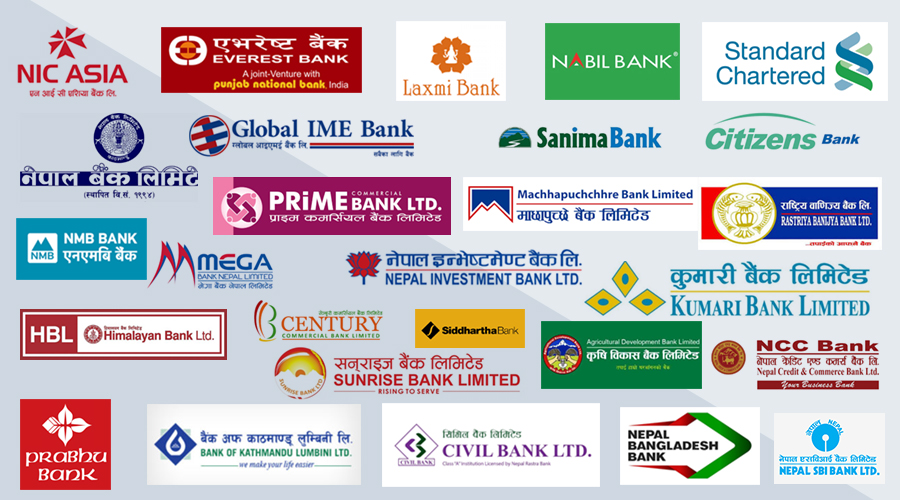KATHMANDU: Nepal’s commercial banks have successfully reduced their bad debt ratio by 3.34% in the last three months of the fiscal year 2023/24, according to a report by the Nepal Rastra Bank (NRB). The report highlights that the bad debt of these banks had escalated to 3.89% of their total loan portfolio by mid-April 2024. However, by mid-July, this ratio had decreased to 3.76%.
Bankers attribute this improvement to a strategic shift in priorities, where banks focused more on recovering non-performing loans (NPLs) rather than issuing new loans during this period. “The situation improved also because borrowers were prompted to clear their debt in the final period of the fiscal year,” said a banker.
The previous fiscal year witnessed an economic slowdown due to a significant drop in aggregate demand. This led to difficulties for banks in increasing their lending, and they faced challenges in recovering loans issued to customers. As of mid-January 2023, the bad debt ratio was at 2.63%, which had escalated from just 1.16% in mid-July 2022.
In the first quarter of FY 2023/24, the bad debt ratio increased to 3.61%, then to 3.63% in the second quarter, peaking at 3.89% in the third quarter.
Classification and Provisioning of NPLs
NRB classifies non-performing loans (NPLs) into three categories based on the period of overdue payments: substandard, doubtful, and bad loans. Substandard loans are those where interest and principal payments are overdue for up to six months. Doubtful loans are overdue between six months to one year, while bad loans are those with overdue periods exceeding one year.
Banks and financial institutions (BFIs) are required to maintain a provisioning amount based on the classification of these loans. For substandard loans, 25% of the loan amount must be provisioned. Doubtful loans require a 50% provisioning, while bad debts necessitate a 100% provisioning.
The decline in the bad debt ratio is also attributed to the central bank’s flexible monetary policies aimed at easing loan repayment conditions for borrowers. The monetary policy extended the deadline for the payment of principal and interest on loans disbursed to construction entrepreneurs until November 2024. It also allowed BFIs to waive the blacklisting of borrowers who cleared past dues and continued paying interest on their loans.
Decline in Bad Debt Among Development Banks and Finance Companies
The report also indicates a decline in bad debts among development banks and finance companies during the review period. The bad debt ratio for development banks slightly decreased from 3.63% to 3.62%. Finance companies saw a more significant improvement, with their bad debt ratio dropping from 10.40% to 9.87%.
Banks Improve Capital Adequacy Ratio
In addition to reducing bad debts, Nepal’s commercial banks have also improved their capital adequacy ratio (CAR) in the last quarter of the fiscal year 2023/24. This improvement has placed most banks in a more comfortable position, enabling them to issue more loans, something that was previously constrained due to low capital adequacy levels.
The NRB’s report reveals that, with the exception of NIC Asia Bank, all 19 commercial banks now have capital adequacy funds that meet or exceed the prescribed threshold. According to the Capital Adequacy Framework 2015 enforced by the NRB, banks are required to maintain a CAR of 11.5%. This includes 9% from tier-1 capital (core capital) and an additional 2.5% from tier-2 capital (supplementary capital).
BFIs are prohibited from expanding their lending activities if they fail to maintain the required CAR. This has been a significant factor preventing BFIs from issuing more loans, despite having ample liquidity.
The latest report highlights that Standard Chartered Bank holds the highest CAR at 17.16%, while NIC Asia Bank is at the lower end with a CAR of 11.18%.
Outlook
The reduction in bad debts and the improvement in CAR signal a positive trend in the stability and resilience of Nepal’s banking sector. As banks continue to focus on strengthening their financial health, the overall stability of the banking sector is expected to improve, creating a more robust financial environment in Nepal.
These developments come at a crucial time, as the global economy faces uncertainties, and financial institutions must navigate through challenging conditions. The proactive measures taken by Nepal’s commercial banks, coupled with supportive monetary policies from the NRB, have laid a solid foundation for continued progress in the coming fiscal year.

